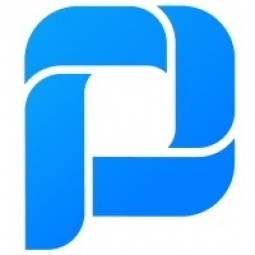公司规模
Large Corporate
地区
- America
国家
- United States
产品
- ProcessMaker
技术栈
- Low-code BPM
- Workflow Software
实施规模
- Enterprise-wide Deployment
影响指标
- Productivity Improvements
- Cost Savings
技术
- 应用基础设施与中间件 - API 集成与管理
适用行业
- 医疗保健和医院
适用功能
- 商业运营
用例
- 过程控制与优化
服务
- 软件设计与工程服务
关于客户
Kaiser Permanente 是一家美国综合管理式医疗联盟,由三个不同但相互依存的团体组成,致力于提供最高效、最有效的患者护理。Kaiser Foundation Health Plan, Inc. (KFHP) 及其地区运营子公司 Kaiser Foundation Hospitals 和地区 Permanente Medical Groups 是美国最大的非营利性医疗计划之一,为 1240 万会员提供服务。该公司 2019 年的年收入为 845 亿美元,拥有 304,874 名员工,服务于美国 50 多个本地市场。该公司的任务是组织位于不同地区的三个相互依存的团体之间的关键财务流程。
挑战
Kaiser Permanente 为美国 50 多个地方市场提供服务,其任务是组织位于不同地理位置的三个相互依赖的团队之间的关键财务流程。诸如评估设备和资本请求或重组人力资源等流程都存在效率低下的问题,导致审批和审核时间拖延、沟通不畅以及严重缺乏透明度。Kaiser Permanente 的几个内部流程都是从电子表格开始的,其中不乏带有复杂指令的单元格。由于团队成员手动将电子表格传递到上层,频繁在用户之间来回移动数据,因此复杂的模板使得很难识别过程中的错误。这种非正式的结构使得很难确定待处理项目的确切进度,导致未经检查的文件滞留在收件箱中。笨重的电子表格难以解读,并且缺乏清晰的审计日志。
解决方案
Kaiser Permanente 意识到非正式结构需要改变,因此他们求助于 ProcessMaker。ProcessMaker 专业服务团队定制了三个新的工作流程,以消除困扰 Kaiser Permanente 金融服务团队生产力的手动任务。使用量身定制的工作流程自动化,Kaiser Permanente 将四个最重要的财务流程转变为自动化工作流程,目前每年处理超过 5,000 起案件。ProcessMaker 为 Kaiser Permanente 提供了构建模块,以将急需的结构引入其财务流程。ProcessMaker 无需费力完成不必要的手动任务,而是减少了请求从提交到批准所需的步骤数。自动化通过根据请求类型动态调整管理批准要求,帮助简化了多层级批准流程。
运营影响
数量效益

Case Study missing?
Start adding your own!
Register with your work email and create a new case study profile for your business.
相关案例.

Case Study
Hospital Inventory Management
The hospital supply chain team is responsible for ensuring that the right medical supplies are readily available to clinicians when and where needed, and to do so in the most efficient manner possible. However, many of the systems and processes in use at the cancer center for supply chain management were not best suited to support these goals. Barcoding technology, a commonly used method for inventory management of medical supplies, is labor intensive, time consuming, does not provide real-time visibility into inventory levels and can be prone to error. Consequently, the lack of accurate and real-time visibility into inventory levels across multiple supply rooms in multiple hospital facilities creates additional inefficiency in the system causing over-ordering, hoarding, and wasted supplies. Other sources of waste and cost were also identified as candidates for improvement. Existing systems and processes did not provide adequate security for high-cost inventory within the hospital, which was another driver of cost. A lack of visibility into expiration dates for supplies resulted in supplies being wasted due to past expiry dates. Storage of supplies was also a key consideration given the location of the cancer center’s facilities in a dense urban setting, where space is always at a premium. In order to address the challenges outlined above, the hospital sought a solution that would provide real-time inventory information with high levels of accuracy, reduce the level of manual effort required and enable data driven decision making to ensure that the right supplies were readily available to clinicians in the right location at the right time.

Case Study
Gas Pipeline Monitoring System for Hospitals
This system integrator focuses on providing centralized gas pipeline monitoring systems for hospitals. The service they provide makes it possible for hospitals to reduce both maintenance and labor costs. Since hospitals may not have an existing network suitable for this type of system, GPRS communication provides an easy and ready-to-use solution for remote, distributed monitoring systems System Requirements - GPRS communication - Seamless connection with SCADA software - Simple, front-end control capability - Expandable I/O channels - Combine AI, DI, and DO channels

Case Study
Driving Digital Transformations for Vitro Diagnostic Medical Devices
Diagnostic devices play a vital role in helping to improve healthcare delivery. In fact, an estimated 60 percent of the world’s medical decisions are made with support from in vitrodiagnostics (IVD) solutions, such as those provided by Roche Diagnostics, an industry leader. As the demand for medical diagnostic services grows rapidly in hospitals and clinics across China, so does the market for IVD solutions. In addition, the typically high cost of these diagnostic devices means that comprehensive post-sales services are needed. Wanteed to improve three portions of thr IVD:1. Remotely monitor and manage IVD devices as fixed assets.2. Optimizing device availability with predictive maintenance.3. Recommending the best IVD solution for a customer’s needs.

Case Study
HaemoCloud Global Blood Management System
1) Deliver a connected digital product system to protect and increase the differentiated value of Haemonetics blood and plasma solutions. 2) Improve patient outcomes by increasing the efficiency of blood supply flows. 3) Navigate and satisfy a complex web of global regulatory compliance requirements. 4) Reduce costly and labor-intensive maintenance procedures.

Case Study
Cloud-based healthcare solution for Royal Philips
Royal Philips wanted to launch its cloud-based healthcare solution HealthSuite Digital Platform in China to deliver services to help cope with challenges related to urbanization and population growth. Philips wanted to achieve this goal by combining mobile, cloud computing and big data technologies. To bring this platform and product to market, Philips required cloud computing and local technical service capabilities in China, in addition to a flexible IT infrastructure that could handle user requests.








